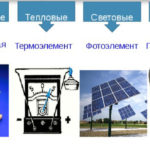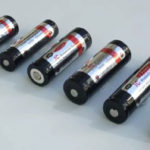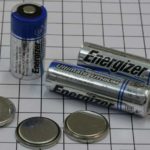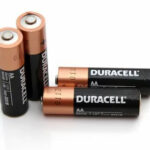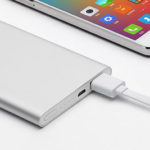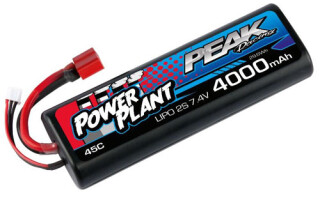The scope of application of electric batteries is extremely wide. They are used as sources of electricity in children's toys, and in power tools, and as a source of traction in electric vehicles. To correctly use batteries, you need to know their properties, their strengths and weaknesses.
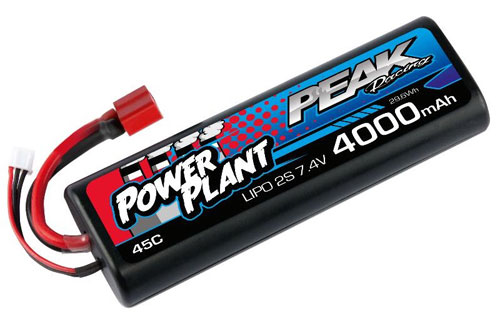
Content
What is an electric battery and how does it work
Electric battery - it is renewable source of electrical energy. Unlike galvanic cells, after being discharged, it can be charged again. In principle, all batteries are arranged in the same way and consist of a cathode and an anode placed in an electrolyte.
The material of the electrodes and the composition of the electrolyte can be different, and this is what determines the consumer properties of batteries and their scope.Between the cathode and the anode, a porous dielectric separator can be laid - a separator impregnated with electrolyte. But it determines, for the most part, the mechanical properties of the assembly and does not fundamentally affect the operation of the element.
In general, battery operation is based on two energy conversions:
- electrical to chemical when charging;
- chemical into electrical during discharge.
Both types of conversion are based on the occurrence of reversible chemical reactions, the course of which is determined by the substances used in the battery. So, in a lead-acid cell, the active part of the anode is made of lead dioxide, and the cathode is made of metallic lead. The electrodes are in an electrolyte of sulfuric acid. When discharged at the anode, lead dioxide is reduced to form lead sulfate and water, and lead at the cathode is oxidized to lead sulfate. Reverse reactions occur during charging. In batteries of other designs, the components react differently, but the principle is similar.
Types and types of batteries
Consumer properties of batteries are determined mainly by its production technology. In everyday life and industry, several types of battery cells are most common.
Lead acid
This type of battery was invented in the middle of the 19th century, and still has its own niche of application. Its advantages include:
- simple, inexpensive and decades-old production technology;
- high current output;
- long service life (from 300 to 1000 charge-discharge cycles);
- the lowest self-discharge current;
- no memory effect.
There are also disadvantages.First of all, this is a low specific energy intensity, leading to an increase in dimensions and weight. There is also poor performance at low temperatures, especially below minus 20 °C. There are also problems with disposal - lead compounds are quite toxic. But this task needs to be addressed for other types of batteries.
While lead-acid batteries have been optimized to their optimum, even here there is room for improvement. For example, there is AGM technology, according to which a porous material impregnated with an electrolyte is placed between the electrodes. This does not affect the electrochemical processes of charge and discharge. Basically, this improves the mechanical characteristics of the batteries (resistance to vibration, the ability to work in almost any position, etc.) and somewhat increases the safety of operation.
Also a notable advantage is improved operation without loss of capacitance and current output at temperatures down to minus 30 °C. Manufacturers of AGM batteries claim an increase in starting current and resource.
Gel batteries are another modification of lead-acid batteries. The electrolyte thickens to a jelly state. This achieves the exclusion of leakage of electrolyte during operation and eliminates the possibility of formation of gases. But the current output is somewhat reduced, and this limits the possibility of using gel batteries as starter batteries. The declared miraculous properties of such batteries in terms of increased capacity and increased resource are on the conscience of marketers.
Lead-acid batteries are usually charged in voltage stabilization mode. At the same time, the voltage on the battery increases and the charging current decreases. The criterion for the end of the charging process is the current drop to the set limit.
Nickel-cadmium
Their century is coming to an end, and the scope is gradually shrinking. Their main drawback is a pronounced memory effect. If you start recharging an incompletely discharged Ni-Cd battery, then the element “remembers” this level, and the capacity is further determined from this value. Another problem is low environmental friendliness. Toxic cadmium compounds create problems with the disposal of such batteries. Other disadvantages include:
- high tendency to self-discharge;
- relatively low power consumption.
But there are also pluses:
- low cost;
- long service life (up to 1000 charge-discharge cycles);
- ability to deliver high current.
Also, the advantages of such batteries include the ability to work at low negative temperatures.
Charging of Ni-Cd cells is carried out in direct current mode. You can fully use the capacity by recharging with a smooth or stepwise decrease in the charging current. The end of the process is controlled by decreasing the cell voltage.
Nickel metal hydride
Designed to replace nickel-cadmium batteries. Many characteristics and consumer properties are higher than those of Ni-Cd. It was possible to partially get rid of the memory effect, increase energy intensity by about one and a half times and reduce the tendency to self-discharge. At the same time, high current efficiency was preserved and the cost remained approximately at the same level. The environmental problem is mitigated - batteries are produced without the use of toxic compounds. But we had to pay for this with a significantly reduced resource (up to 5 times) and the ability to work at negative temperatures - only up to -20 ° C versus -40 ° C for nickel-cadmium ones.
Such cells are charged in direct current mode. The end of the process is controlled by increasing the voltage on each element up to 1.37 volts. The most favorable is the pulsed current mode with negative surges. This eliminates the effects of the memory effect.
Li-ion
Lithium-ion batteries are taking over the world. They displace other types of batteries from those areas where the situation seemed unshakable. Li-ion cells have practically no memory effect (it is present, but at a theoretical level), withstand up to 600 charge-discharge cycles, energy intensity is 2-3 times higher than the ratio of capacity and weight of nickel-metal hydride batteries.
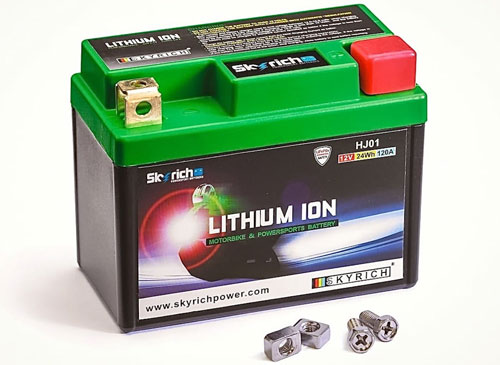
The tendency to self-discharge during storage is also minimal, but you literally have to pay for all this - such batteries are much more expensive than traditional ones. One can expect price reductions with the development of production, as is usually the case, but other inherent disadvantages of such batteries - reduced current efficiency, the inability to work at negative temperatures - are unlikely to be overcome within the framework of existing technologies.
Along with an increased fire hazard, this somewhat hinders the use Li-ion batteries. It should also be borne in mind that such elements are subject to degradation. Even if they are not charged and discharged, their resource itself goes to zero in 1.5 ... 2 years of storage.
The most favorable charging mode is in two stages. First, a stable current (with a smoothly increasing voltage), then a stable voltage (with a smoothly decreasing current). In practice, the second stage is implemented in the form of a stepwise reduced charging current. More often this stage consists of one stage - the stabilized current simply decreases.
Main characteristics of batteries
The first parameter that is paid attention to when choosing a battery is its Rated voltage. The voltage of one battery cell is determined by the physicochemical processes occurring inside the cell, and depends on the type of battery. One fully charged bank gives out:
- lead-acid element - 2.1 volts;
- nickel-cadmium - 1.25 volts;
- nickel metal hydride - 1.37 volts;
- lithium-ion - 3.7 volts.
To get a higher voltage, the cells are assembled into batteries. So, for a car battery, you need to connect 6 lead-acid cans in series to get 12 volts (more precisely, 12.6 V), and for an 18-volt screwdriver - 5 lithium-ion cans of 3.7 volts each.
The second important parameter is capacity. Determines the battery life under load. It is measured in ampere-hours (the product of current and time). So, a battery with a capacity of 3 Ah, when discharged with a current of 1 ampere, will be discharged in 3 hours, and with a current of 3 amperes, in 1 hour.
Important! Strictly speaking, Battery capacity depends on the current discharge, so the product of current and discharge time at different load values for one battery will not be the same.
And the third important parameter - current supply. This is the maximum current that the battery can deliver. It is important, for example, for automotive battery - determines the possibility of turning the motor shaft in the cold season. Also, the ability to deliver high current, creating a high torque, is important, for example, for power tools. And for mobile gadgets, this characteristic is not so important.
The electrical properties and consumer qualities of batteries depend on their design and production technology. The correct use of batteries means using the advantages of renewable chemical power sources and leveling the disadvantages.
Similar articles:
